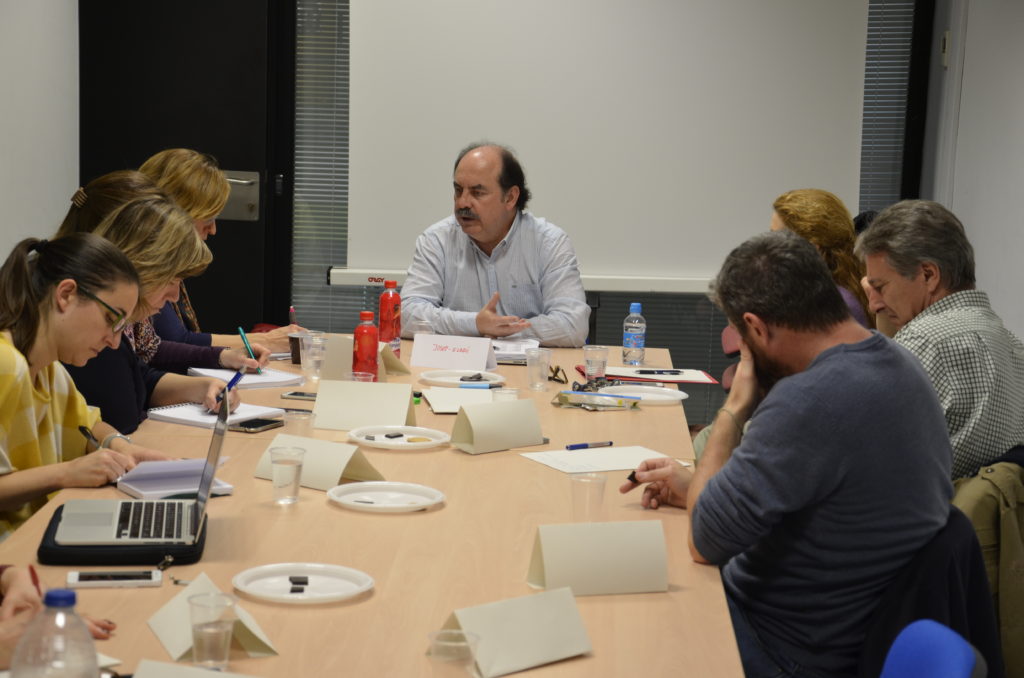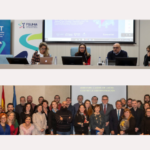Seminar on the placebo effect with Josep Eladi Baños
LORENA CANO ORÓN// On April 1, Josep Eladi Baños, doctor of Medicine and lecturer of Pharmacology at the Pompeu Fabra University (UPF), gave a seminar entitled “The incorporation of complementary therapies in medicine studies and approximations on placebo and nocebo effects”, in the Language Theory and Communication Sciences Department of the Universitat de València.
From the beginning of the seminar, given to the members of the ESTENAS team, Josep Eladi Baños insisted on the need to clarify some points to be able to approach the complementary therapies also called natural or alternative. In the first place, he pointed out that there are practitioners of medicine who consider them all as a big scam and that from their point of view it is not a sensible option either, because within the set of “complementary therapies” there is too much diversity. On its behalf, the Ministry of Health has been unable to regulate the practice of these therapies so far, which would undoubtedly allow sanitary control and their the distinction. Since it is not regulated, it is not clear who can qualify which opens the door to fraud first, and to health danger later.
Josep Eladi insisted on exemplifying the case of osteopathy and chiropractic, two types of therapies considered “natural” by the Ministry of Health, but which are taught in specific Masters at the UPF. The professor defends that it is necessary that professionals can learn all the processes and knowledge necessary to know in depth the effects and possible consequences, both positive and negative, of the practice of therapy. In the case of the UPF, the students who enroll in the master’s degree are health professionals (doctors, physiotherapists, graduates in physical education…) and the duration of these higher studies is two years. As a comparison, in Europe there are many countries where graduates in osteopathy have done a specific degree on this knowledge. Therefore, an osteopath with official qualification would be completely differentiated from another type of “therapist” with a two-week course and without previous training in the field of biomedicine.
In the course of the seminar the debate arose about whether the problem or the virtue that these natural or complementary therapies can have is that they give momentary comfort, but they do not cure, so that they mask the warnings of a more serious diagnosis. Therefore, the need to differentiate “increase in the feeling of well-being” and “cure” is highlighted. What led us to the object of the seminar itself: the placebo effect.
It is necessary to distinguish between placebo and placebo effect. A placebo is a substance or treatment that does not have an explainable biological effect on the disease. On the other hand, the placebo effect is the biological response to the administration of a placebo. Currently, the placebo effect is considered an integral part of the total effect that follows any therapeutic procedure along with others. Any treatment that is performed has a part of effectiveness due to the placebo effect.
The placebo effect is still somewhat difficult to explain, but real and quantifiable. According to Josep-Eladi, to begin with, the initial expectation of patients is of vital importance. Of 100% effect of a medically, up to 50% may be due to the placebo effect and this is manifested in terms of the expectations patients have about it. In fact, he told us that there are doctors who have a placebo personality, that only because of how they treat they induce the improvement of the patient.
To exemplify the effect of expectations on the improvement of patients, Josep Eladi explained the case of clinical trials with crossed groups (Crossover Clinical Trial), that are clinical trials in which both treatments under study (experimental and control) are administered to each patient in successive periods that have been randomly determined, which allows each subject to be their own control. That is, the first time patients of group A are given an active substance and the patients of group B, an inactive substance (placebo), and the second round the other way around. In many occasions it is observed in the second round that the group A, with just the memory of the relief they felt due to the consumption of the substance activates the relief mechanism almost as strongly as the group B, which is receiving active treatment on this second occasion.
To end the session, Josep Eladi explained many other factors that influence the placebo effect: from the doctor’s speech (if he looks in the eyes, if the message he gives is positive…) to the physical characteristics of the medicine. For example, the size of the tablet (larger, more effect), or the colour. And if instead of a pill it is an injection or a surgery, the effect is even greater.
For more information of the placebo effect and its opposite, the nocebo effect, we invite you to check the review and free access article of Josep Eladi in the journal Medicina Clínica “Efecto nocebo: la otra cara del placebo”









